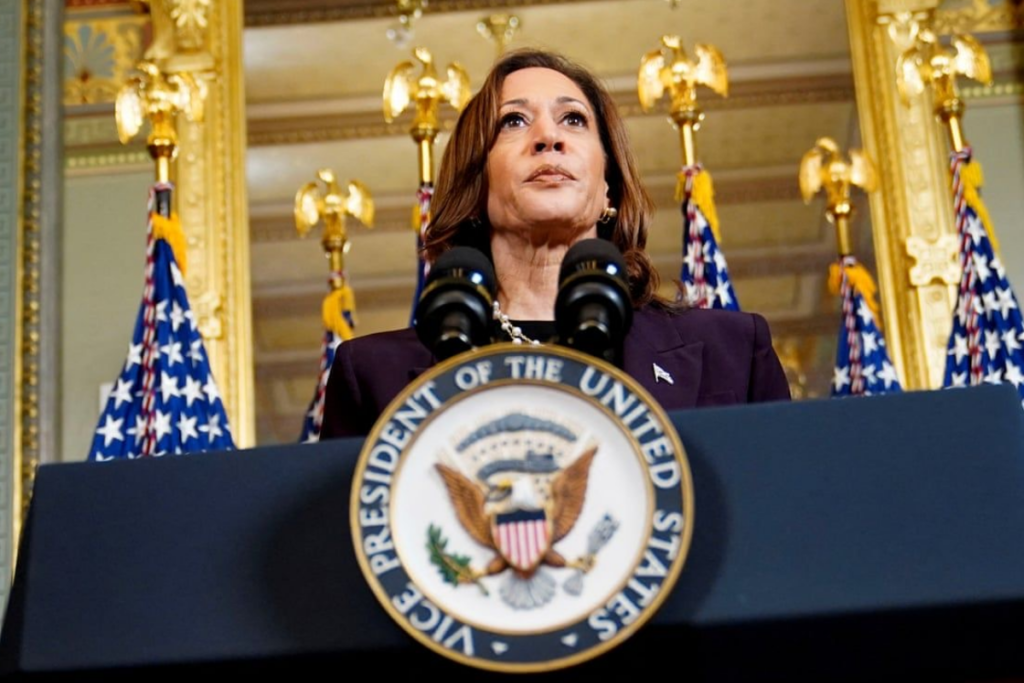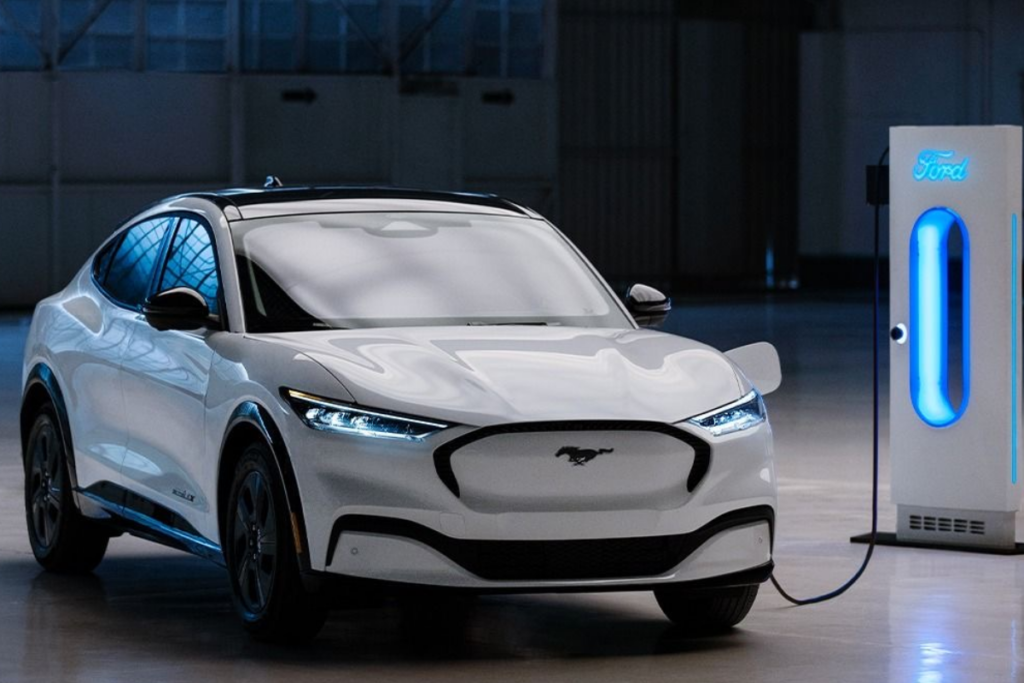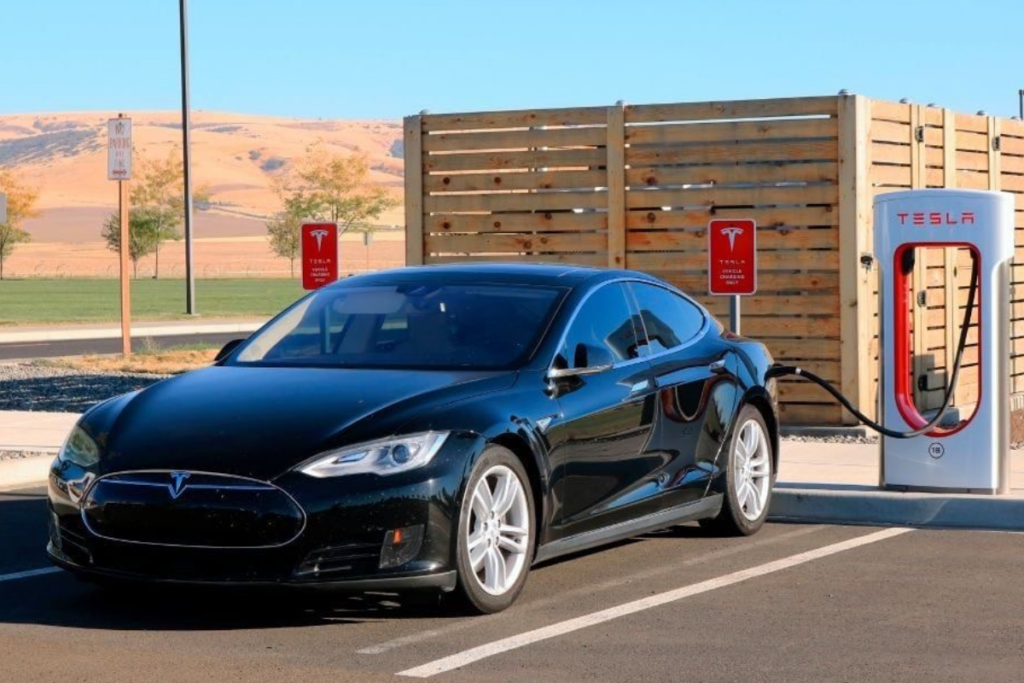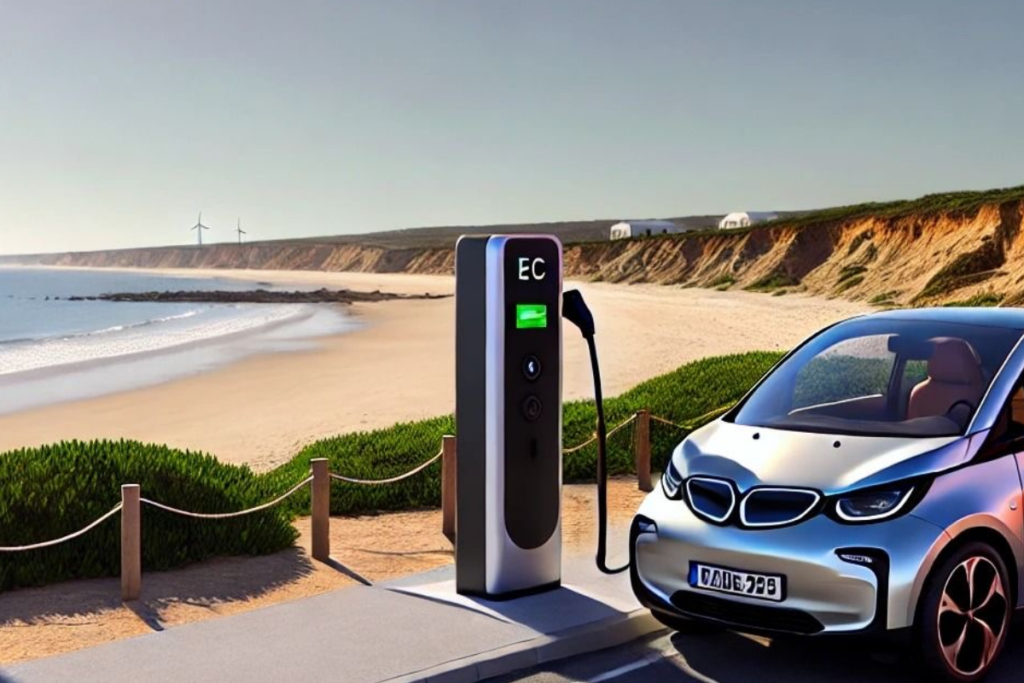The Harris electric vehicle has witnessed a setback. The car industry is slowing down its total commitment to fully electric vehicles and is now leaning towards hybrids.
One major car manufacturing company that was pushing for electric vehicles (EVs) is Ford. Ford’s recent shift from fully electric cars to hybrid models shows a significant change in its strategy. It shows that some challenges occurred during the push for EVs.
Vice President Kamala Harris’ Electric Vehicle Plan
Ford’s initial plan was to focus on all-electric SUVs. However, they have now decided to focus on hybrids instead. The company’s decision shows that transitioning to fully electric vehicles may be more difficult than expected.

The Chief Financial Officer of the car manufacturing company, John Lawler, made a statement. He emphasized that the company’s foremost priority is profitability. “Ford’s objective is to transform itself into a more profitable and sustainable business,” Lawler said. “Part of our strategy involves responding to market demands, and right now, consumers prefer hybrid vehicles.”
This transition from fully electric to hybrid cars is a setback for the Biden-Harris administration. The administration, especially VP Kamala Harris, pushed for a fully electric future. Kamala Harris has been vocal about her support for moving away from gas-powered vehicles. However, Ford’s recent pivot to hybrid vehicles raised questions about the possibility of federal EV initiatives.
Tom Barrett, a Republican congressional candidate, criticized the Harris electric vehicles and the government’s aggressive push for them. He called it “unwanted and unworkable.” His comments show that there are many concerns about how these policies might affect American jobs and industries.
ALSO READ: Gasoline and Electric Cars: Comparing Their Lifespan Costs and the Importance of Location
What Are the Obstacles to the Development of Electric Vehicles?
The foremost obstacle to EV development is building an extensive network of EV charging stations nationwide. Transportation Secretary Pete Buttigieg mentioned logistical challenges in achieving the administration’s objective of 500,000 chargers by 2030.

Another challenge is that the transition to fully electric vehicles is causing Ford considerable financial loss. Last year, Ford’s electric vehicle division, the Ford Model E, reported a $4.7 billion loss. This economic loss highlights car manufacturers’ financial difficulties as they transition to new vehicle technologies.
Another obstacle to the development of EVs is a political debate over Harris electric vehicles, which is becoming increasingly political. Former President Donald Trump promises to end the Harris electric vehicle mandate if he is re-elected. This ensuing debate reflects deep divisions over the government’s role in shaping the industry’s future.
The government will need to support the transition to fully electric vehicles. However, if the state or government members are divided over the transition, it can be an obstacle.
What Is the Biggest Challenge With Electric Vehicles?
One significant challenge electric vehicles face is the limited availability of charging infrastructures. Although they offer environmental benefits, they have many requirements.

EVs require a network of charging stations. However, these charging stations are less widespread or convenient than gas stations. This problem makes it hard for people to rely on fully electric cars. They might be able to manage short trips around the limited available stations, but the real problem occurs when there is a need for long trips. It can also be challenging and unreliable in areas with scarce charging stations.
Other challenges include the time it takes to charge an electric vehicle and the production cost of each electric vehicle. Because manufacturing electric vehicles is expensive, the cars and the batteries they use are expensive. This means EVs won’t be affordable for the average person.
ALSO READ: Zeekr, Chinese EV Maker, Claims Its New Battery Outpaces Tesla in Charging Speed
Furthermore, government policies, like the Harris electric vehicle initiative, are essential in adopting electric vehicles. A lack of these policies can hinder the adoption, while the presence of the policies can promote the use of EVs. Government support can drive demand and drive innovation within the auto industry.
Consumer awareness and acceptance of the vehicle are also critical. Concerns about its affordability and its unfamiliarity with EV technology are slowing consumers’ adoption.
Electric cars face high competition from other manufacturers, and hybrid vehicles are increasingly being produced. Electric vehicles also raise environmental concerns about the production and disposal of EV batteries, which require some materials, like lithium and cobalt, which can harm the environment.
Who Is the Largest EV Seller in the World?
At the time of this article, Tesla is the largest seller of electric vehicles in the world. Tesla has maintained its top position in the global EV market because of the popularity of its Model 3 and Model Y vehicles.

The company is focused on innovation, a growing charging infrastructure, and strong brand appeal. These objectives have helped it dominate the electric vehicle market, outshining competitors in sales and market share.
You Might Also Like:
British Tech Entrepreneur Mike Lynch and Morgan Stanley’s Bloomer Rescued from Yacht Wreckage
At 42, He Sold His Startup for $1.3 Billion—It All Began with a $17,500 Camera He Couldn’t Afford
Fed Chair Powell Signals Upcoming Interest Rate Cuts: ‘The Time Has Come for Policy to Adjust’

